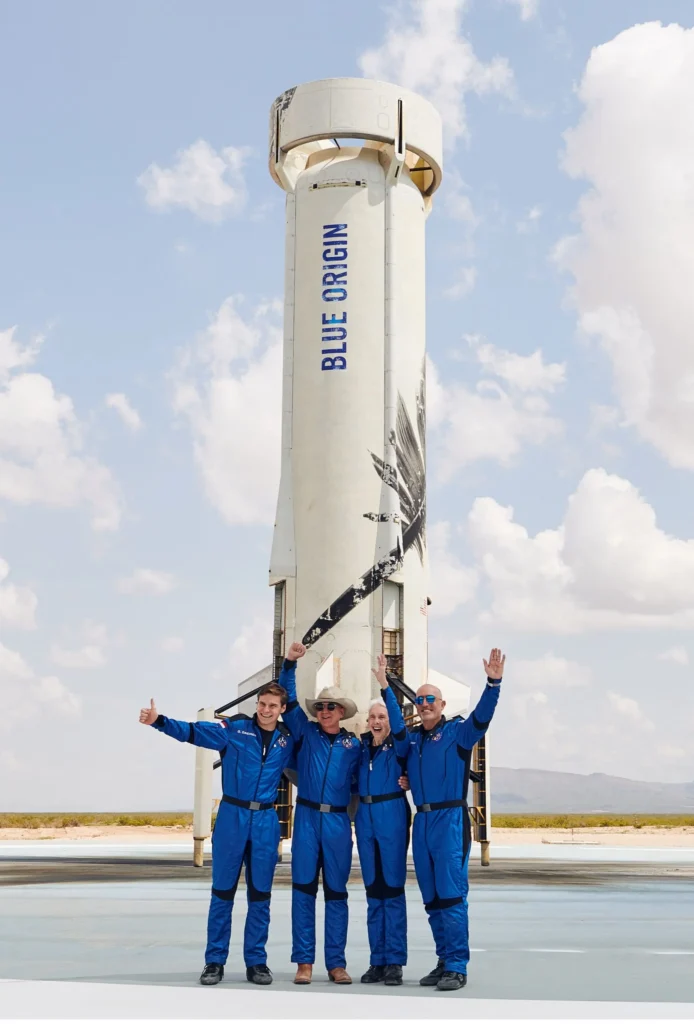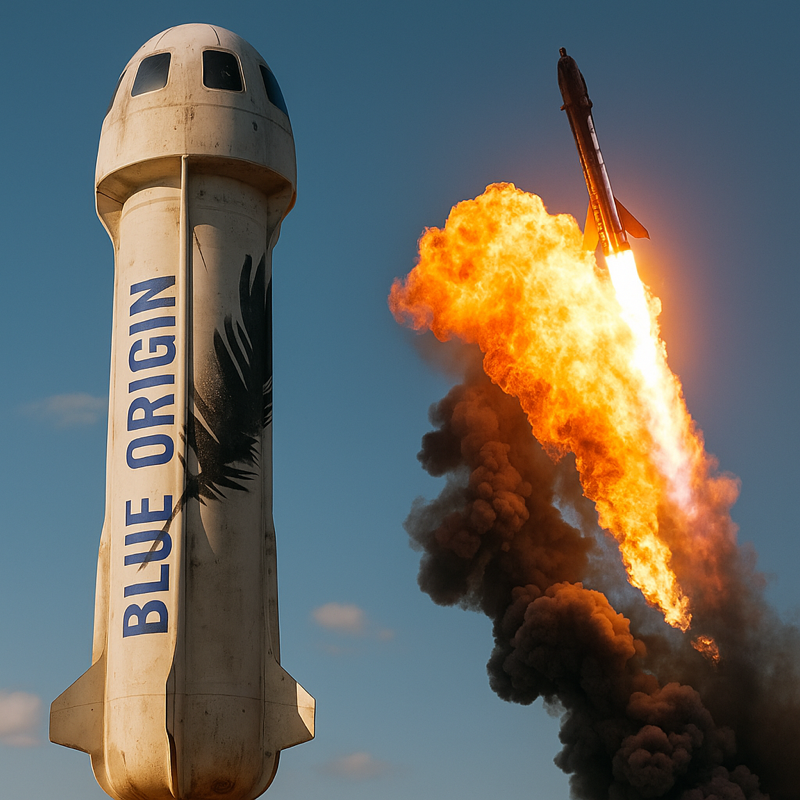The race for the stars is heating up again, and two familiar names — Blue Origin and Firefly Aerospace — are right in the middle of it. Jeff Bezos’ Blue Origin is preparing for one of its most critical launches yet, showcasing its space ambitions. Meanwhile, Firefly faces another setback after its Alpha rocket exploded during testing in Texas. Together, these stories represent the incredible ambition and inherent risk in modern space ventures.
What’s Happening & Why This Matters
Blue Origin’s Lunar Push

Blue Origin’s upcoming New Glenn mission could determine whether the company truly establishes itself as a heavyweight in orbital launches. The company’s ambitions extend to recovering and reusing the rocket’s massive booster, and it also aims to demonstrate readiness for its Blue Moon lunar lander program — a central part of NASA’s Artemis initiative.
The first lunar lander, Blue Moon Mark 1, is fully assembled and heading to NASA’s Johnson Space Center for vacuum testing. After that, it will be shipped to Florida’s Space Coast. Designed to deliver up to 6,600 pounds of cargo, it’s taller than NASA’s historic Apollo lander and marks the start of a long-term lunar supply strategy.
As Blue Origin’s own engineer Remias puts it:
“We are building a series, not a singular lander, but multiple types and sizes and scales of landers to go to the Moon.”
The second Mark 1 will deliver NASA’s VIPER rover to search for water ice at the Moon’s south pole in 2027. This mission is a major one that could unlock sustained human presence beyond Earth. Future versions, like the Mark 2, are being designed for crewed landings. These efforts directly challenge SpaceX’s Starship, NASA’s other human-rated lander.
Firefly’s Setback

While Bezos’ space ambitions soar, Firefly Aerospace hit turbulence. The company’s Alpha rocket suffered a fiery explosion on its Texas test stand, with its booster destroyed just before shipment. It was heading to Vandenberg Space Force Base for a mission with Lockheed Martin.
Firefly confirmed the loss, stating that all personnel were safe and that standard safety protocols worked as intended. The test was meant to validate the Alpha rocket’s return to flight after a previous in-flight failure in April. During that flight, the upper-stage engine shut down early.
This incident depicts how even seasoned private space firms encounter engineering challenges as they pursue reliable, low-cost access to orbit. Firefly’s ambitions in the space sector illustrate the immense pressure all companies face in such a competitive arena.
Europe, SpaceX, and the Expanding Race
Meanwhile, the European Space Agency (ESA) is investing €40 million in Avio — the company behind the Vega rocket — to design a mini reusable launcher akin to SpaceX’s Starship. The project shows Europe’s space ambitions as it embarks on its first concrete steps towards competing with the U.S. private rocketeers.
And speaking of SpaceX, the company is gearing up for another Starship test flight this month. It aims to test improved heat shield tiles and a new banking maneuver. This maneuver simulates a return-to-base reentry trajectory.
The U.S., Europe, and China are now neck-and-neck in the next phase of space industrialization. This includes efforts from lunar bases to in-orbit fuel depots and reusable boosters. NASA insiders warn that China may reach the Moon with astronauts before the U.S., intensifying pressure on programs like Blue Moon to deliver results.
TF Summary: What’s Next
All eyes are on Blue Origin’s next New Glenn launch — a mission intended to cement its place alongside SpaceX or surface questions about its capabilities. If successful, the Bezos-backed flyer could accelerate NASA’s timeline for a U.S. lunar return. Success involves using a modified Mark 1 lander to fulfill its space ambitions.
As for Firefly, recovery from its test stand explosion is critical for investor confidence and long-term sustainability. And with ESA’s reusable rocket plans, the competition for orbital and lunar dominance is reaching beyond U.S. borders.
MY FORECAST: Expect 2026 to be a pivotal year. Blue Origin’s ability to reuse its rockets, SpaceX’s next Starship milestone, and ESA’s new launcher plans can redefine global access to orbit. Private space exploration is not limited to billionaires — it’s the new frontier of strategy to conquer space ambitions.
— Text-to-Speech (TTS) provided by gspeech


